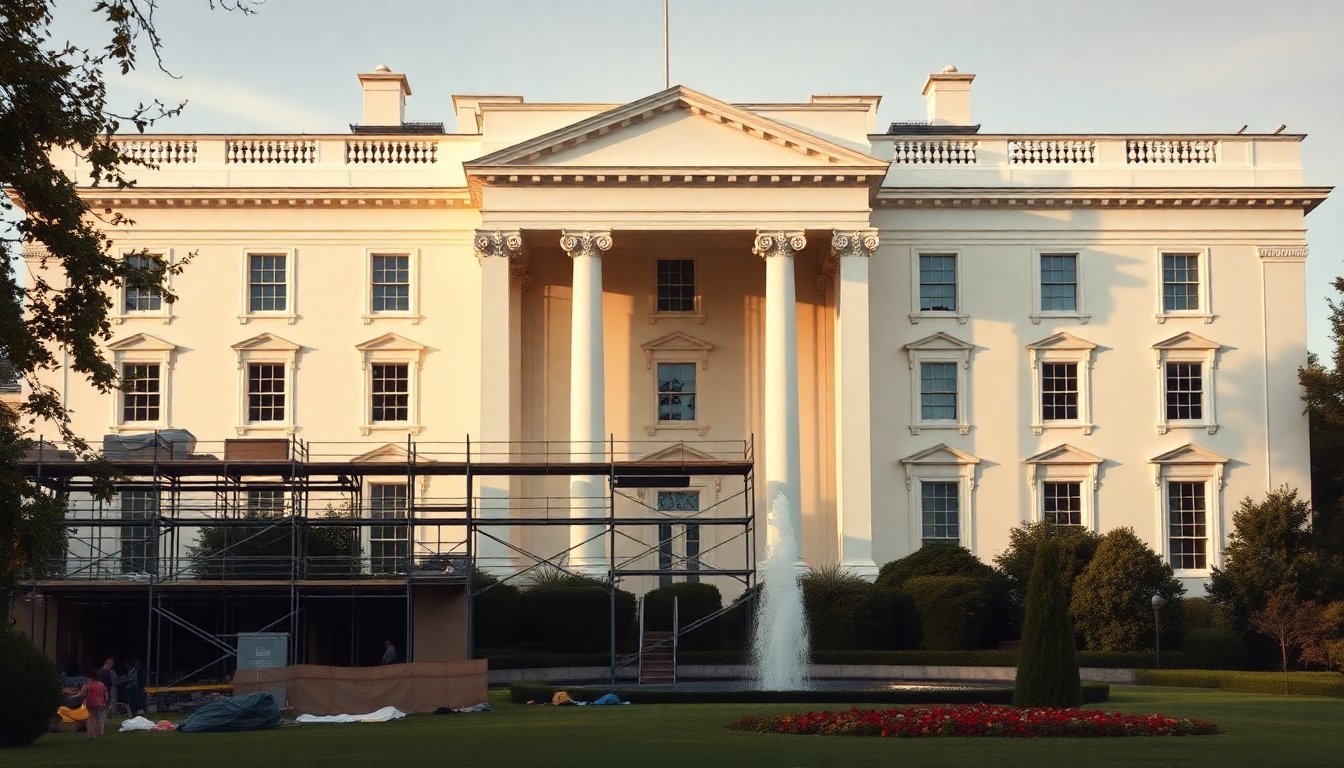Table of Contents
In a recent statement, Michelle Obama has publicly criticized President Donald Trump‘s ambitious project to renovate the East Wing of the White House. This initiative aims to significantly expand one of the world’s most renowned buildings and has sparked intense debate regarding its implications for historical preservation.
The proposed plans envision a substantial increase in the building’s footprint and raise questions about the architectural integrity of a space that has long served as a symbol of American history. Obama, who served as First Lady from 2009 to 2017, articulated her concerns regarding the potential consequences of this renovation.
The implications of Trump’s renovation plans
Trump’s project promises to almost double the size of the existing East Wing, a move that has been met with skepticism from various quarters. Critics argue that such a dramatic alteration could undermine the historical significance of the structure.
Michelle Obama emphasized that the East Wing is not merely a functional space but a monumental part of the White House’s legacy.
Renovations of this magnitude often stir up controversy, particularly when they involve structures of such historical importance. The East Wing has served various functions throughout its history and is a testament to the evolving narrative of the American presidency.
Obama highlighted that any changes should be approached with caution, ensuring that the rich history embedded within its walls is not sacrificed in the name of modernity.
Historical significance of the East Wing
The East Wing, completed in 1942, has witnessed countless historical moments and has hosted numerous events that have shaped American culture and politics.
Its architectural style reflects the Federal and Georgian influences prominent in the early 20th century, embodying a sense of continuity and tradition. Obama pointed out that the building’s design is not just aesthetic but tells a story of resilience and progress.
Moreover, the East Wing houses the White House Visitor Center and several important offices, including the First Lady’s East Wing staff. The remodeling plans, while promising modern amenities, could disrupt the functional aspects that serve the public and the administration alike. The risk of overshadowing the building’s historical context in the wake of such changes is a primary concern.
Public reaction and political implications
Reactions to Trump’s renovation plans have been polarized. Supporters praise the initiative as a necessary upgrade to a historic structure. However, many, including Obama, have expressed their discontent, fearing that the project may prioritize aesthetics over authenticity. The public discourse surrounding this issue highlights the ongoing debate about how best to preserve historical sites while accommodating contemporary needs.
Furthermore, Obama’s comments resonate with a broader movement advocating for the preservation of historical landmarks amidst modernization trends. Preservationists argue that history should not be discarded in favor of new constructions that may not align with the original vision.
The future of historical renovations
As the conversation surrounding the East Wing renovation continues, it serves as a case study for future projects involving historical buildings. Striking a balance between progress and preservation is essential to ensure that the legacies of such landmarks are honored. As Michelle Obama aptly put it, the East Wing should remain a space that reflects the values and stories of those who have come before, rather than a blank canvas for new ambitions.
The ongoing debate surrounding Trump’s plans for the East Wing encapsulates a significant challenge faced by contemporary society: how to navigate the intersection of history and modernity. Michelle Obama’s critique serves as a reminder of the importance of maintaining the integrity of our historical sites while embracing the future.





